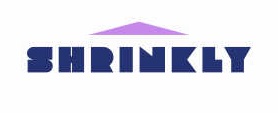Investing in a Gold Particular person Retirement Account (IRA) has grow to be an increasingly in style choice for people trying to diversify their retirement portfolios and protect their savings towards economic downturns. Gold has lengthy been seen as a secure-haven asset, and in occasions of monetary uncertainty, it may well serve as a hedge against inflation and currency fluctuations. In this article, we are going to explore the benefits and issues of investing in a Gold IRA, together with how it really works, the types of gold that may be included, and the potential dangers involved.
Understanding Gold IRAs
A Gold IRA is a specialised type of self-directed Individual Retirement Account that permits buyers to carry bodily gold and different precious metals as a part of their retirement savings. Unlike traditional IRAs that usually put money into stocks, bonds, and mutual funds, a Gold IRA provides buyers the chance to include tangible property in their retirement portfolios.
To determine a Gold IRA, traders should work with a custodian who specializes in treasured metals. The custodian manages the account, ensuring compliance with IRS laws whereas facilitating the acquisition and storage of gold. Investors can roll over funds from existing IRAs or 401(okay) plans into a Gold IRA, providing a seamless transition into this various funding.
Advantages of Investing in Gold IRAs
Inflation Hedge: Considered one of the primary advantages of investing in gold is its historic function as a hedge against inflation. As the price of living rises, the worth of gold tends to extend, preserving buying power over time. This characteristic makes gold a pretty possibility for lengthy-term buyers seeking to safeguard their retirement savings.
Diversification: A well-diversified portfolio is important for managing threat. Together with gold in an funding portfolio can provide a counterbalance to the volatility of stocks and bonds. During periods of economic uncertainty, gold typically performs well, while traditional property could decline in value.
Tangible Asset: In contrast to stocks or bonds, gold is a tangible asset that traders can physically hold. This side can present a sense of safety, especially throughout times of financial crisis when confidence in paper property may wane. Proudly owning bodily gold may give traders peace of mind, realizing they possess a valuable commodity.
Tax Advantages: Gold IRAs supply tax benefits just like conventional and Roth IRAs. Contributions to a conventional Gold IRA may be tax-deductible, and the account grows tax-deferred until withdrawals are made during retirement. Roth Gold IRAs enable for tax-free withdrawals in retirement, offered certain situations are met.
World Demand: Gold is a globally acknowledged asset with demand that spans varied industries, together with jewelry, know-how, and finance. This universal appeal helps to stabilize its worth over time, making it a dependable funding selection.
Kinds of Gold for IRA Funding
Not all gold is eligible for inclusion in a Gold IRA. The IRS has specific tips regarding the kinds of gold that can be held in these accounts. Eligible gold must meet certain purity standards, sometimes 99.5% pure or greater. The next are some common types of gold that can be included in a Gold IRA:
Gold Bullion Coins: These are coins minted by governments and are fabricated from pure gold. Examples embody the American Gold Eagle, Canadian Gold Maple Leaf, and South African Krugerrand.
Gold Bars: Gold bars are another fashionable possibility for Gold IRAs. They are available in various sizes and are sometimes produced by respected refiners. Investors should be certain that the bars meet the required purity standards.
Gold Rounds: Much like coins but not considered legal tender, gold rounds are produced by private mints and will also be included in a Gold IRA if they meet the purity requirements.
Risks and Considerations
While investing in a Gold IRA gives quite a few advantages, there are additionally risks and considerations to remember:
Market Volatility: Like any funding, the price of gold could be volatile. Whereas it typically acts as a safe haven during financial downturns, there are intervals when gold prices can decline, impacting the general worth of the funding.
Storage and Insurance coverage Costs: Bodily gold should be saved in a secure facility, which may incur further costs. Investors ought to remember of storage charges and insurance expenses associated with holding bodily gold in an IRA.
Liquidity Points: Promoting physical gold will be much less liquid than selling stocks or bonds. Buyers may face challenges in rapidly changing their gold holdings into cash, especially throughout market downturns.
Regulatory Compliance: Gold IRAs are topic to IRS rules, and failing to comply with these guidelines can lead to penalties. Investors ought to work closely with a educated custodian to make sure compliance and avoid potential points.
Limited Development Potential: Not like stocks, gold does not generate dividends or curiosity. Whereas it may possibly admire in value, buyers searching for revenue-producing assets may find gold much less interesting.
Conclusion
Investing in a Gold IRA is usually a strategic transfer for individuals seeking to diversify their retirement portfolios and protect their financial savings from economic uncertainties. With its historical position as a protected haven, gold affords unique advantages, including inflation hedging and diversification. However, potential traders should carefully consider the related dangers, costs, and regulatory necessities before making a decision.
As with any investment, it is essential to conduct thorough analysis and seek the advice of with financial advisors to determine if a Gold IRA aligns with particular person monetary goals and irasgold threat tolerance. For these searching for a dependable and tangible asset to incorporate of their retirement strategy, a Gold IRA could also be a invaluable addition to their investment portfolio.
